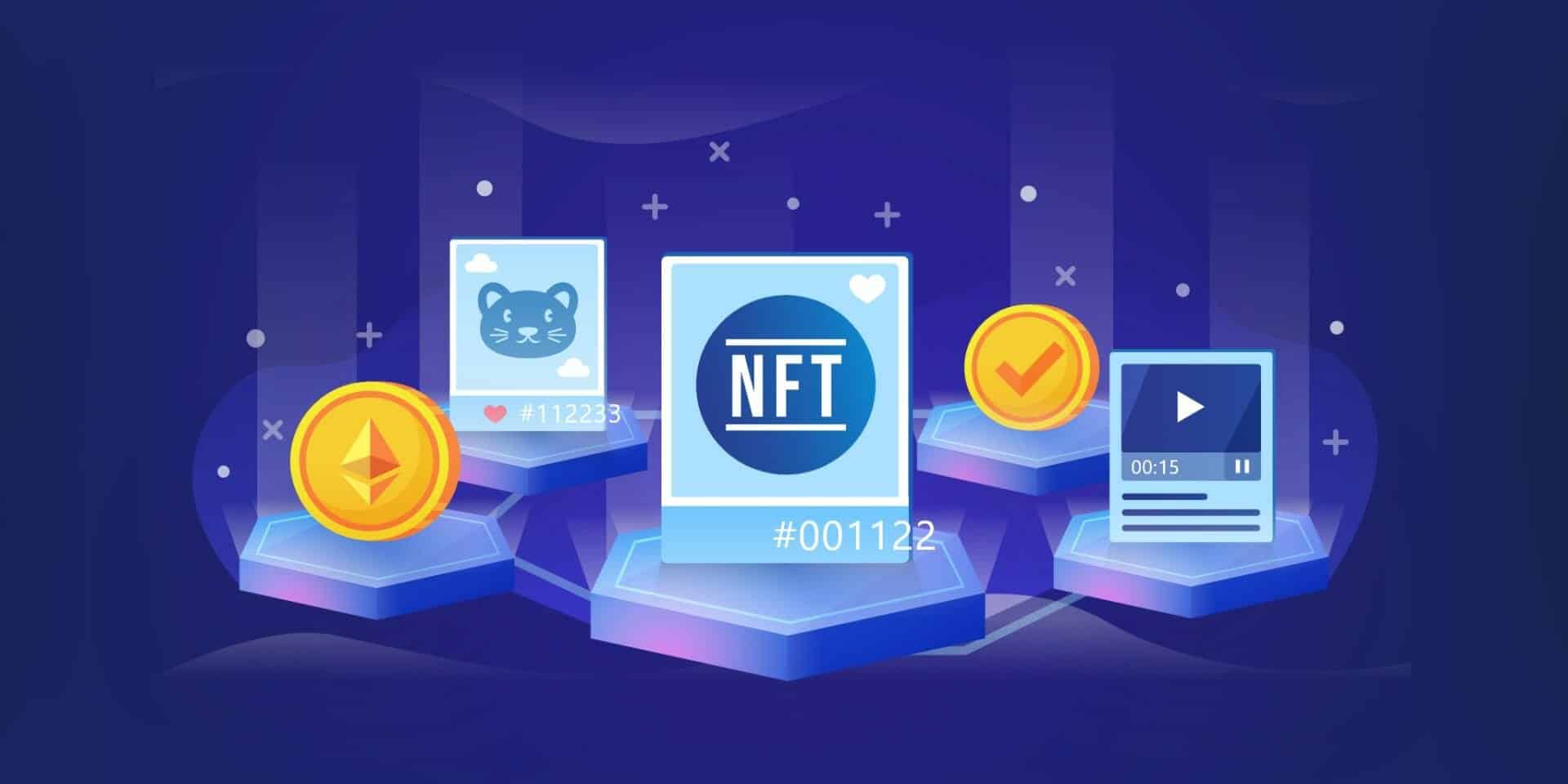Non-fungible tokens are currently gaining popularity in line with the cryptocurrency market’s significant trends such as Bitcoin and Ethereum.
The NFT is a new type of digital asset that verifies a person’s ownership of a specific investment. In the world of digital art, each NFT represents the property of an original and unrepeatable work of art; thus, you may consider them as one-of-a-kind digital items.
The NFTs may come in sports trading cards, musical files, or even tweets, such as the one from Twitter’s CEO and founder Jack Dorsey, who recently sold his first tweet for 1.630.58 Ethereum, around US$2.9 million at the date of purchasing in March 2021.
These tokens are maintained on Blockchain networks that use the same technology as Bitcoin to establish digital currencies.
They include data about the artwork or item, such as the artist’s name, the date it was sold, and the buyer’s identity. While anyone can view the work on the Internet, only the person who purchased it can claim ownership.
NFTs are different from other cryptocurrencies in that they are not exchangeable. While digital currencies can be exchanged for another, NFTs are one-of-a-kind and cannot be replaced. Therefore, they are considered rare collectibles.
These tokens can be resold, traded, and transferred to another person. Still, the artist or owner of the underlying asset retains intellectual property rights and can benefit from the token transfer.
Trading high
The NFT market reached record highs in Q2 2021, with sales totaling US$2.5 billion, up from US$13.7 million in the first half of 2020.
According to a latest report, the NFT art market grew more than 800 percent in the first four months of 2021, from US$52 million in January to US$490 million at the end of April.
As a result, more artists are interested in creating NFT artwork, and several agencies and galleries have launched specialised digital art management sections.
According to NonFungible.com, there were more than twice as many buyers as sellers in Q1 2021, with 73,000 buyers vs. 33,000 sellers, highlighting the current upswing in the NFT industry. “This signals a massive interest in new entrants. But it is also a signal of the present owners’ desire to protect their assets, creating scarcity phenomena in the market,” the report added.
NFT art galleries in Middle East
Many artists began to enter the NFT world in the Middle East, where digital exhibitions started to emerge. Last April, for example, in collaboration with Saudi artist Ahad Al Amoudi, Gallery Bawa, a digital art gallery in Kuwait, launched the first NFT exhibition in the GCC entitled “The Old Saudi Calls for Beauty the Desert.”
Behnoud Art, the first NFT agency for Islamic digital arts in the Middle East, will be launched this month by the Dubai-based Behnwood Foundation.
The Foundation plans to use the new art agency to update the artworks of talented artists in the Middle East and sell their unique digital frames to fine arts collectors across the world through live auctions. In addition, more than 100 artists are collaborating with Behnoud Art to create artwork for NFT.
Crypto-asset regulations in GCC
The GCC, mainly Abu Dhabi, and Bahrain are not distant from the trading market, and they are particularly active in developing regulations for managing these encrypted assets. Moreover, these countries compete to attract start-ups in this industry by offering funds and physical workspace, trial possibilities, and licenses with trust and protection.
To that purpose, Abu Dhabi Global Market (ADGM), a commercial enclave in Abu Dhabi, has developed a framework to regulate cryptocurrency and digital asset transactions, with the Financial Services Regulatory Authority (FSRA) issuing guidelines on regulating crypto asset activities in cooperation with ADGM.
ADGM offers a range of digital licensing types, such as digital banking, digital securities offer virtual asset exchange and digital payment.
Similarly, in Resolution No. (21/R.M) of 2020, the Securities and Commodities Authority (SCA) of the UAE developed a regulatory framework for offering and purchasing tokens.
Bahrain has established a legislative and regulatory protection fund for these assets in cooperation with the Central Bank of Bahrain (CBB), and those who desire to trade in them must comply with the CBB Protection Fund’s conditions, which include the following:
Individuals or organisations seeking to conduct crypto-related business must be licensed in one of the four categories it has formed.
After being granted the license, the licensee must provide evidence of capital funds to undertake crypto-asset transactions.
In transactions, only approved crypto assets and relevant rules can be used.
If the third party is licensed as a “client,” licensees of crypto-asset services can trade with/on behalf of individuals or companies.
Challenges and opportunities
After all, just like the cryptocurrency sector and other markets such as stocks and Special Purpose Acquisition Corporations (SPACs), the current debate is whether the NFT has entered the bubble phase.
However, it should be realised that NFT’s current market capitalisation of around US$30 billion is a fraction of other bubbles predicted in recent years, implying that there is more space for investors to join in the future.
Another issue with NFTs is the impact of their production on the environment. According to Digiconomist, a measure of Ethereum power consumption, each Ethereum transaction currently has a CO2 emission of over 40 kg.
NFT, on the other side, can be a goldmine or a way for artists to make a respectable income if they choose to enter the digital world.
As a relatively new market, the price discovery process will likely change in the coming months. As with all things cryptocurrency and token-related, it will be interesting to see how this industry matures to become more genuine.








